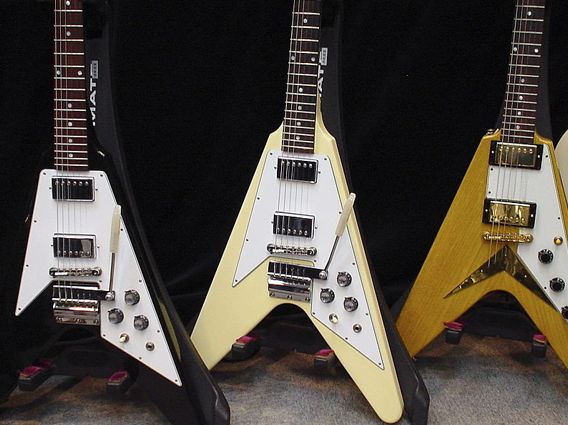In this article, we'll be looking at a recent US court judgment that deals with an issue that we discuss with some regularity – shape trade marks and, indeed, the wider issue of the legal protection afforded to product shapes.
The Gibson case
A US court has held, in the case of Gibson Brands Inc. v. Armadillo Distribution Enterprises Inc. and Concordia Investments Partners LLC, that certain trade mark registrations of the guitar-maker Gibson, relating to the shapes of some of its most famous guitars, are not generic and are therefore valid trade marks. The court found that a company with its Dean-branded guitars was guilty of infringing Gibson's Flying V, Explorer, ES, and SG body shape trade marks. However, the jury also found that Gibson waited too long to enforce its rights in the trade marks and awarded minimal damages in the amount of USD4 000 out of the USD7-million sought by Gibson.

Gibson was, nevertheless, cock-a-hoop with the result. This press release is perhaps something of a master-class in how to maximise an IP win:
"Gibson's guitar shapes are iconic and now are firmly protected for the past, present, and future...this court decision is also a win for Gibson fans, artists, dealers, and related partners who expect and deserve authenticity. Not to mention all of the iconic American brands that have invested in meaningful innovation and continued protection, only to see it diluted with unauthorised and often illegitimate knockoffs."
Shape trade marks come up a lot
Regular readers of our articles will know that we discuss product shape trade marks quite often, be they related to lipsticks, coffee capsules, footwear (moonboots), black cabs (taxis)...This reflects how important they are.
Departing significantly from the norm
Regulars will also know that the European approach to shape trade marks is a somewhat sceptical one. It's basically this: the average consumer does not make assumptions about the origin of goods on the basis of the shape of the goods without reference to words or logos. This means that "only a three-dimensional mark consisting of the appearance of the product itself, which departs significantly from the norm or customs of the sector" will be registrable.
UK courts have also used this test, for example in a case involving London cabs.
South Africa
In South Africa, the test appears to be a little less strict. We had the famous Kit Kat case, where the Supreme Court of Appeal ("SCA") ruled that a trade mark registration for the shape of the Kit Kat bar was valid and that this registration did not contravene the "technical result" exclusion. This exclusion appears in section 10(5) of the South African Trade Marks Act, 1993, and states that it is not possible to register:
"a mark which consists exclusively of the shape, configuration or colour of goods where such shape, configuration or colour is necessary to obtain a specific technical result or results from the nature of the goods themselves."
The court held that the trade mark did not consist "exclusively" of a shape that's necessary to obtain a technical result because, even though there were functional features to it, there were also non-functional features.
Significantly, the SCA found that the shape of the chocolate bar had become distinctive through use. The court was happy to accept this on the basis of evidence of use going back many years.
Registered designs
It is, of course, very important to remember that in South Africa, product design is specifically covered by the field of registered designs. The Designs Act, 1993 provides that designs can be either aesthetic or functional. An aesthetic design is defined as one which has "features which appeal to and are judged solely by the eye, irrespective of the aesthetic quality thereof".
Case law tells us that what this means is that the features "must be calculated to attract the attention of the beholder". It means that "aesthetic designs are those that invite customer selection – and customer discrimination between articles – solely by their visual appeal."
The South African legislation also makes provision for the registration of functional designs – designs involving "features which are necessitated by the function which the article to which the design is applied is to perform".
Novelty is a requirement for both aesthetic and functional designs. In the case of an aesthetic design, the test for novelty is that it must be "new" and "original". In the case of a functional design, the test for novelty is that it must be 'new' and 'not commonplace in the art in question".
Complex stuff
The protection of product shapes is certainly not simple, but it is very important, as it can be very easy for a company to cause consumer confusion through the use of a product shape that is similar to that of a competitor.
The lesson to be learnt from this judgment is that shapes are protectable as trade marks, although it is not always a straight forward process towards registration.
It is important not only to protect unique product shapes but also to timeously enforce your rights in the shape to prevent dilution of the brand by the sale of illegitimate knockoffs by third parties.
Please contact the ENSafrica IP team for further advice on the protection of your trade marks.
Reviewed by Rowan Forster, an Executive in ENSafrica's IP department.
The content of this article is intended to provide a general guide to the subject matter. Specialist advice should be sought about your specific circumstances.

